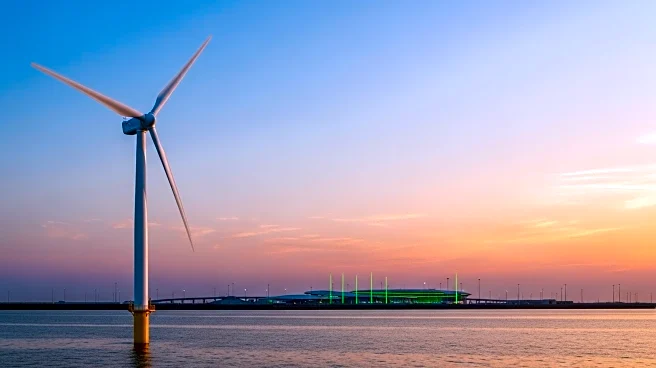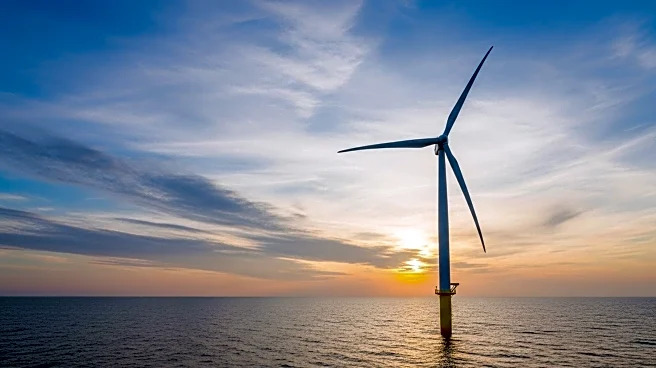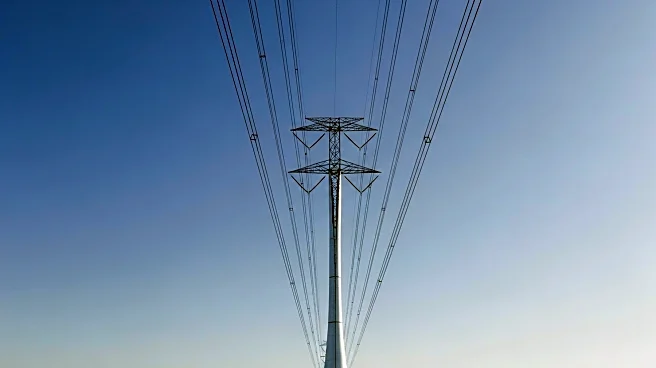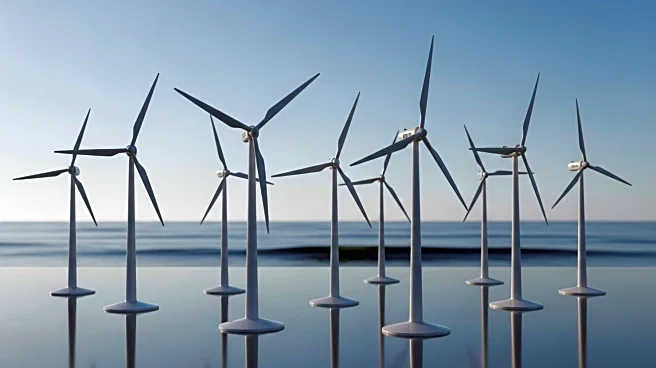What's Happening?
The California Energy Commission has approved $42.75 million in grants for the development of offshore wind ports, marking the first use of the state's Climate Bond funds for this purpose. This decision
is part of a larger $225.7 million investment authorized by California lawmakers to support offshore wind port infrastructure through 2030. The initiative aims to establish California as a hub for floating offshore wind, with the Port San Luis Harbor District set to become the state's first dedicated offshore wind hub. Other ports, including Long Beach, Humboldt Bay, Oakland, and Richmond, have also received grants for feasibility studies and planning. Despite federal project cancellations on the East Coast, California continues to lead in offshore wind development, driven by state-level demand and infrastructure investments.
Why It's Important?
California's investment in offshore wind infrastructure is crucial for the state's renewable energy goals, particularly in decarbonizing the power sector. Offshore wind offers a more consistent and robust energy source compared to terrestrial wind, and technological advancements are reducing costs. This development supports California's position as a leader in renewable energy, potentially attracting further investment and innovation. The initiative also highlights the role of state governments in driving renewable energy projects, regardless of federal policy changes. However, some local residents have expressed concerns about potential duplication of studies and the allocation of funds.
What's Next?
The grants will facilitate the planning and engineering of offshore wind ports, with the Port San Luis Harbor District and the Port of Long Beach making significant progress. The completion of these projects is expected to enhance California's capacity for commercial floating offshore wind by the mid-2030s. Public support for the initiative is strong, although some opposition exists regarding the prioritization of funds. The ongoing development of offshore wind infrastructure will likely continue to shape California's energy landscape and influence national renewable energy policies.
Beyond the Headlines
The focus on offshore wind development in California reflects broader trends in renewable energy adoption and the state's commitment to environmental sustainability. The initiative may also influence other states to invest in similar projects, potentially leading to a more decentralized and resilient energy grid. Additionally, the emphasis on state-driven energy projects underscores the importance of local governance in achieving national climate goals.











